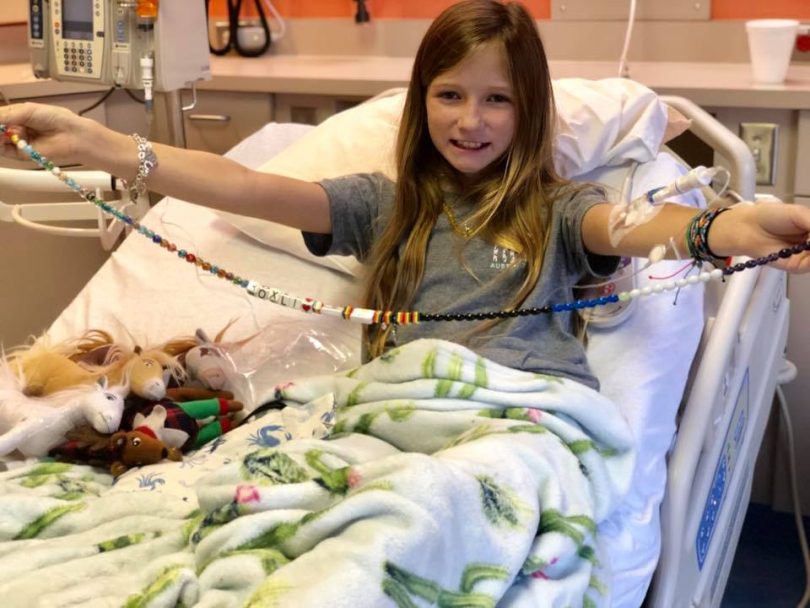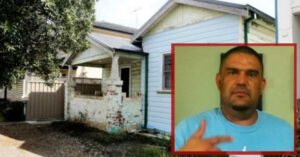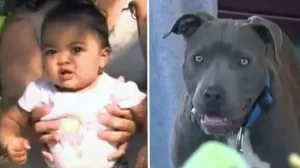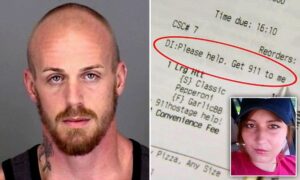This girl was told her brain tumor was inoperable, but when it was time to gauge the results, one Texas family received the worst news: their little girl had a deadly illness. It sucked the air out of their lungs as they were immediately thrust into the world of hospitals and exhausting treatments.
But despite statistics and scientific certainties, their family maintained unshakable hope. And after months of giving it everything they had, the doctors were totally confused when it was time to gauge the results. Eleven-year-old Roxley Doss was an average kid.
She attended church regularly, as the Doss family were active members. Outside school hours, she was happiest hanging out at the stables and learning to ride horses. Nearing the end of her school year, Roxley started feeling a little bit off. At first, she and her family chalked it up to a bad headache and brushed it aside. Over the next few days, though, her pain wasn’t relenting, and Roxley couldn’t ignore it.
Doing as sick kids do, she complained to her mom, Gina, and Scott Doss went ahead and gave their daughter some children’s pain reliever. Headaches happen, after all, and they hoped this would do the trick. Days turned to weeks, and Roxley’s headaches grew stronger and more frequent. Her parents, concerned that their daughter was too young to experience incessant migraines, decided it was time to have their family physician weigh in. The doctor ran tests as a precaution to see if there were any visible explanations for Roxley’s recurring headaches.
Examining the lab findings, the doctor discovered an immediate root cause of the pain. Gathered in the doctor’s office, Gina and Scott were shattered by the news she delivered. Roxley’s results confirmed that she had an extremely rare kind of tumor called Diffuse Intrinsic Pontine Glioma, or DIPG. A childhood cancer diagnosis is a very particular kind of devastation, and the Doss family received the worst of the suit. The location of her tumor at the base of her brain on top of her spine made it impossible to remove.
Gina and Scott listened as the doctor explained how the disease would begin to affect Roxley’s body: decreased ability to swallow, vision loss, decreased ability to talk, eventually difficulty breathing. The words of Dr. Virginia Herod at Dell Children’s Medical Center stung in their ears. With no known cure, the best Dr. Herod could offer for medical advice was aggressively treating Roxley with radiation.
No, her cancer wouldn’t be cured, but at least it would buy her more time than would a typical DIPG diagnosis offers. Before they could accept this bleak sentence, they needed to get another opinion. DIPG was incredibly rare, so there was a chance of misdiagnosis.
The moment they left the hospital, they reached out to their church community for prayers. Hopping on planes, the Doss family visited all the best children’s cancer centers in the country: Dana Farber Cancer Institute in Boston, Johns Hopkins in Baltimore, University of Texas MD Anderson in Houston, and Texas Children’s Hospital in Austin.
Across the board, oncology specialists told them the same thing: Roxley’s tumor was, in fact, DIPG. They listed the main bodily functions that would begin to shut down as cancer progressed. The general consensus was a rapid decline in breathing, heartbeat, swallowing, balance, and sight. Normally, patients facing a DIPG diagnosis live an average of nine months after their initial diagnosis. But Roxley’s family refused to resign themselves to a deadline.
Gina and Scott put their game faces on, determined not to give up their hope that their Donna would be the exception to the rule. Praying for a miracle, the family became a fixture at the Dell Children’s Medical Center. Most children with the DIPG diagnosis fall between ages five to nine, so eleven-year-old Roxley was even more of a medical anomaly. Six days a week for six weeks, Roxley toughed it out in a hospital bed. When her arms weren’t full of tubes, she was undergoing radiation to shrink the tumor below her brain.
Along with treatment came the toll of nausea, fever, and constant fatigue. Even in the midst of painful treatments, Roxley was in good spirits. The Doss family maintained extreme confidence in their faith, and their church community rallied to support them. A GoFundMe page was set up to help fund the unexpected costs of her immediate treatments. After completing rigorous radiation treatments, Roxley and her parents stepped back into the hospital, this time to see if her tumor had shrunk as they hoped.
Gina and Scott watched their daughter lay down for yet another MRI, wondering how their lives had changed so much in a few months’ time. Armed with the knowledge that 70 percent of patients see effective shrinkage in tumor size from radiation, Dr. Howard examined the results. “When I first saw Roxley’s MRI scan, it was actually unbelievable.” Roxley’s scan seemed impossible.
Expecting to see a tumor reduced in size, Dr. Howard was astonished that the image of a child’s brain was completely free of any signs of a tumor. It had utterly vanished. The odds were so unlikely. Roxley made medical history.
She’s the first DIPG patient to have their tumor fully removed by radiation therapy. In the eyes of the Doss family, it’s simply an example of a miracle. “Every day, we still will say it. It’s kind of our family thing that God healed Roxley,” Gina said. Looking at statistics of her prognosis didn’t fall to the Doss’s strength of faith for a second.
They kept their prayers and hope alive, and in the end, Roxley defied the odds. Still, the medical community was interested in her result. This positive came out of one of the worst childhood cancers. Dr. Hajipanayis, director of Neurosurgical Oncology at Mount Sinai Health System in New York City, said the rapid elimination of the tumor was unheard of, with zero traces of its existence on an MRI.
Outlining an explanation for Roxley’s case, Dr. Hajipanayis noted the possibility of a DIPG diagnosis is inaccurate, granted five of the top oncology centers in the country determined her cancer was the aggressive form of tumor, despite being unable to perform a biopsy. Whether a miracle of science or faith, we can’t be sure.
For the near future, Roxley must continue getting scans and tests from a medical team periodically to ensure the cancer cells won’t return. To stop the regrowth in its tracks, Roxley’s receiving immunotherapy, a newer cancer treatment that involves redirecting your own existing cells to fight the disease.
So far, the little trooper is back on her feet with her head held high. Scott’s smile could be heard in his words: “We didn’t know how long she would be healthy, and look at her. She’s just doing awesome.” It goes to show that maintaining hope in the face of the worst diagnosis has value. Medical certainties are never 100 percent.





